Energy of Chaos: Eight Essential Works of Chim↑Pom
By The Editors
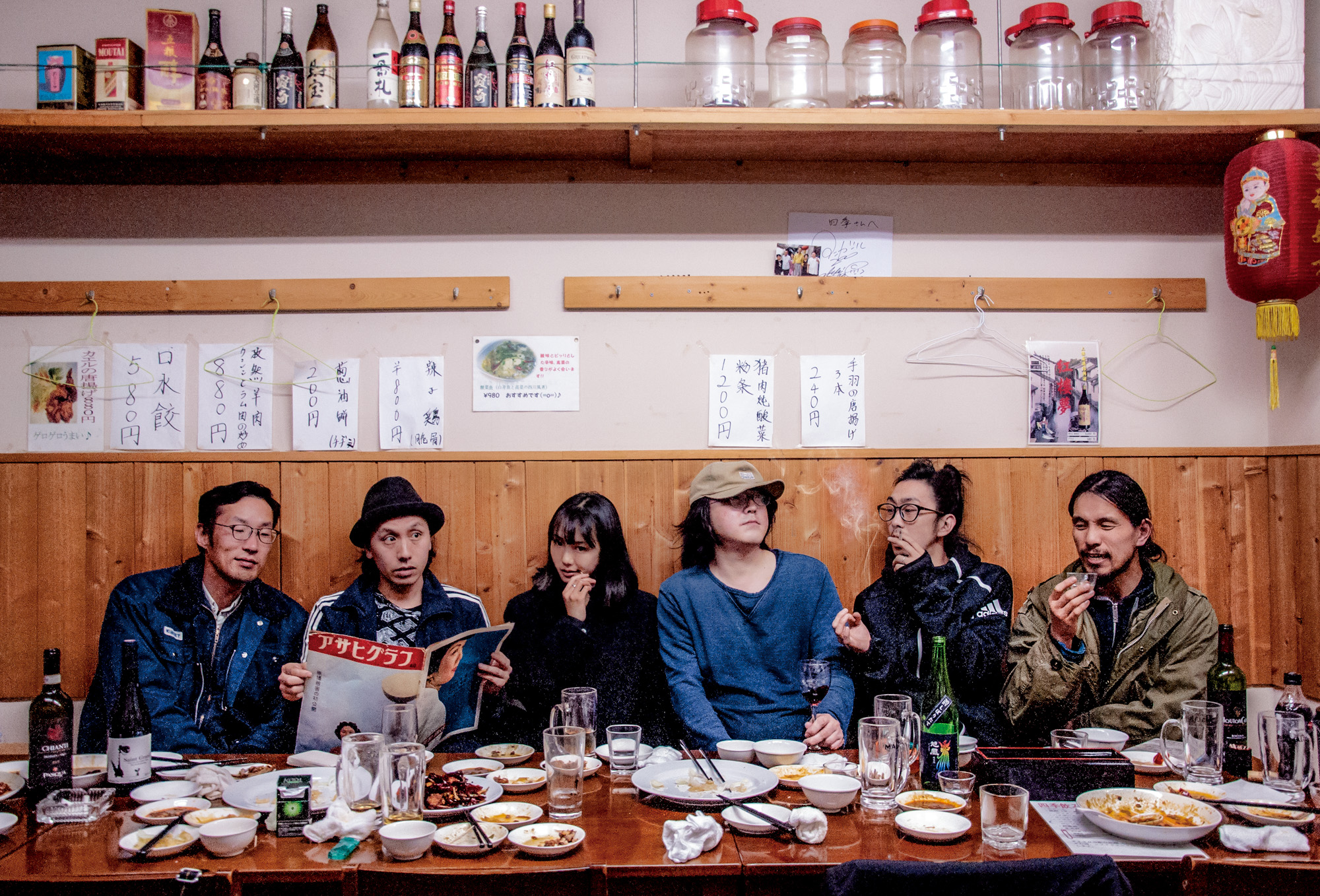
Group portrait of CHIM-POM. Photo by Seiha Yamaguchi. All images courtesy the artist; Anomaly, Tokyo; and Mujin-to Production, Tokyo; unless otherwise stated.
Active since 2005, the artist collective Chim↑Pom was formed by six artists: Ellie, Ryuta Ushiro, Yasutaka Hayashi, Masataka Okada, Toshinori Mizuno, and Motomu Inaoka. Inspired by their mentor, the veteran artist Makoto Aida, the group is dedicated to engage with society through their experiments and projects in the public space, such as the streets and buildings in Tokyo and the garbage fields in Indonesia. These projects sometimes draw controversy, and the question of whether they are just stunt artists dabbling disingenuously in social commentary has dogged them throughout their career. Yet their chaotic but energetic acts seek to uncover the truth in our times and pushes the boundaries of discussions on issues such as urbanization, nuclear disasters, government control, and global capitalism, with mediums ranging from found objects and waste to photography and videos. Their works have been exhibited within Japan and internationally at museums such as Museum Ludwig, Cologne; Hammer Museum, Los Angeles; Museum of Contemporary Art, Taipei; and Centre Pompidou, Paris. At the time of their largest retrospective “Happy Spring,” scheduled to open at Tokyo’s Mori Art Museum today, ArtAsiaPacific examined eight major projects by Chim↑Pom and their innovative approaches throughout the years.

CHIM-POM, Super Rat, 2006, taxidermied rat and paint, still from video. Copyright the artist. Photo by Yoshimitsu Umekawa.
Super Rat (2006– )
The collective’s first and most well-known series Super Rat features taxidermied rats, painted yellow to resemble the famous Pokémon character Pikachu and often displayed within detailed dioramas of urban places in Japan. Mutated, contaminated, and undead, the yellow-hued rats hint at concerns surrounding illness and radiation. The title Super Rat is both a nod to the urban rat population—which are nicknamed as such due to their alleged poison resistance—and the Superflat movement led by Takashi Murakami. By stuffing “Pikachus” into galleries and playfully addressing the hated animals as “comrades,” the work indicates Chim↑Pom’s attempt to break the dichotomy between high and low art, as well as their interest in the “crooked coexistence” of Japan’s social underbelly.

CHIM-POM, BAKUHATSU, 2007, still from video: 5 min 41 sec.
THANK YOU CELEB PROJECT: I’M BOKAN (2007)
“Bokan” is a colloquial Japanese onomatopoeia for explosion, which refers to Chim↑Pom’s acts during their one-month stay in Cambodia, 2007. Working with the local villagers, member Ellie used her own luxury items, such as iPods and Louis Vuitton bags, as well as a plaster statue featuring herself, for the detonation of the landmines during the process of demining. After returning to Tokyo, the items and the remains of the statue were sold as artworks at a charity auction, where the price started high and dropped until a bidder accepts the item. The auction raised a total of JPY 2.1 million (USD 18,000) and all of Chim↑Pom’s share of the proceeds was donated to people in need during their second visit to Cambodia. While the project remained controversial as it originates from Ellie’s dream to emulate her idol, the late Princess Diana’s minefield charity work, the meta-narrative of this project reveals the complex reality of Cambodian landmines and the emotional voyeurism of public charity.
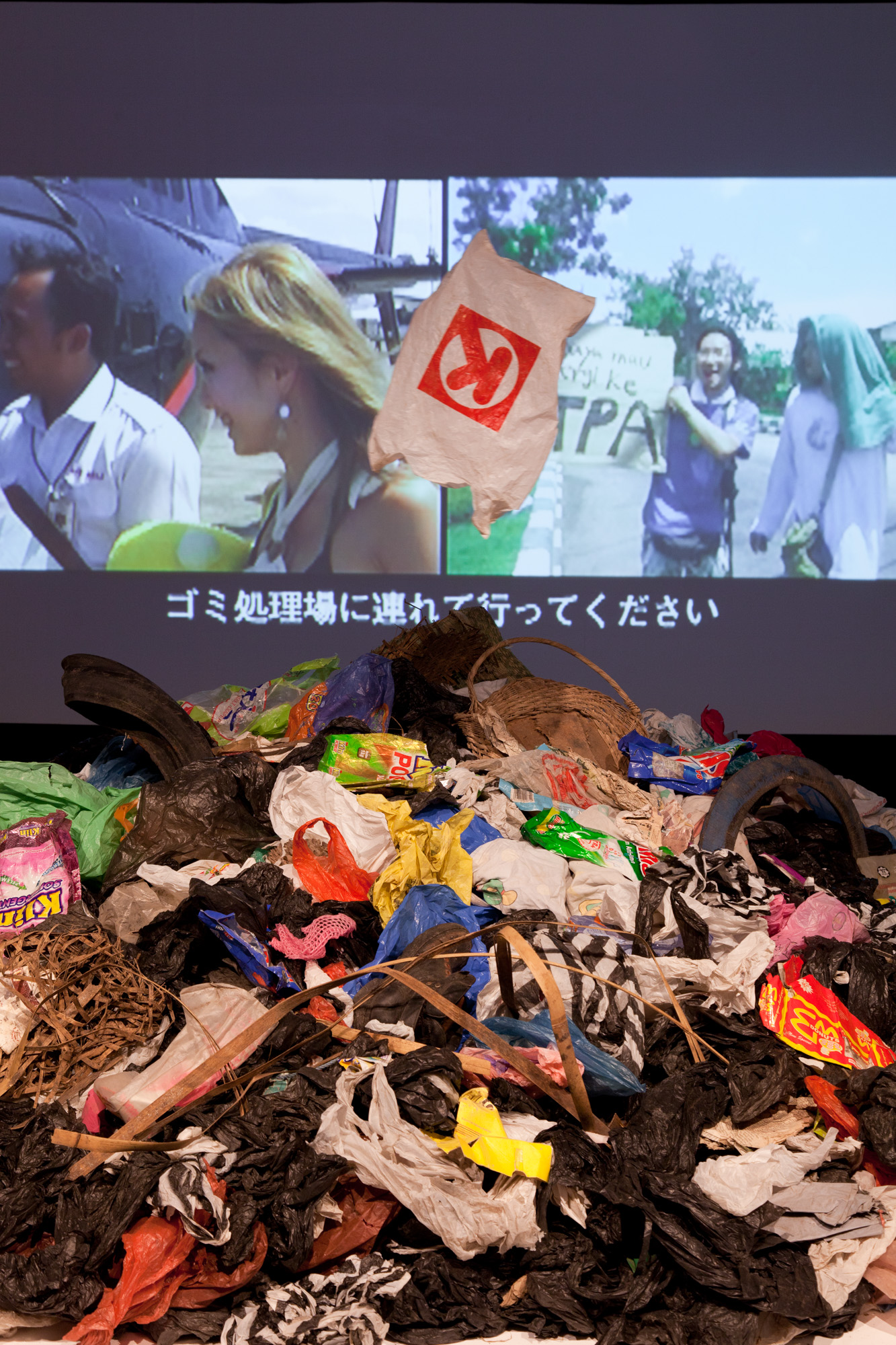
Installation view of CHIM-POM’s Saya mau pergi ke TPA, 2008, video installation with garbage bought in Bali, dimensions variable, at Parco Museum Tokyo, 2012. Photo by Kenji Morita.
TPA (2008)
Chim↑Pom sought to critique global capitalism with TPA, a video installation about a gigantic garbage field typically hidden from tourists in Bali, where locals make a living by collecting plastic bags. For this project, Chim↑Pom teamed up with the locals and persuaded a luxury helicopter company to fly above the mountains, an airspace controlled by the military out of the government’s desire to deny the existence of the garbage field. In the video, Chim↑Pom approached the landfill from land and sky, with member Ellie acting as a wealthy tourist and throwing a plastic bag out of her chartered helicopter while member Mizuno worked side by side with the locals for a week to find it. The bag, along with other materials collected onsite, was brought back to Japan and used as part of a physical installation accompanying the video.
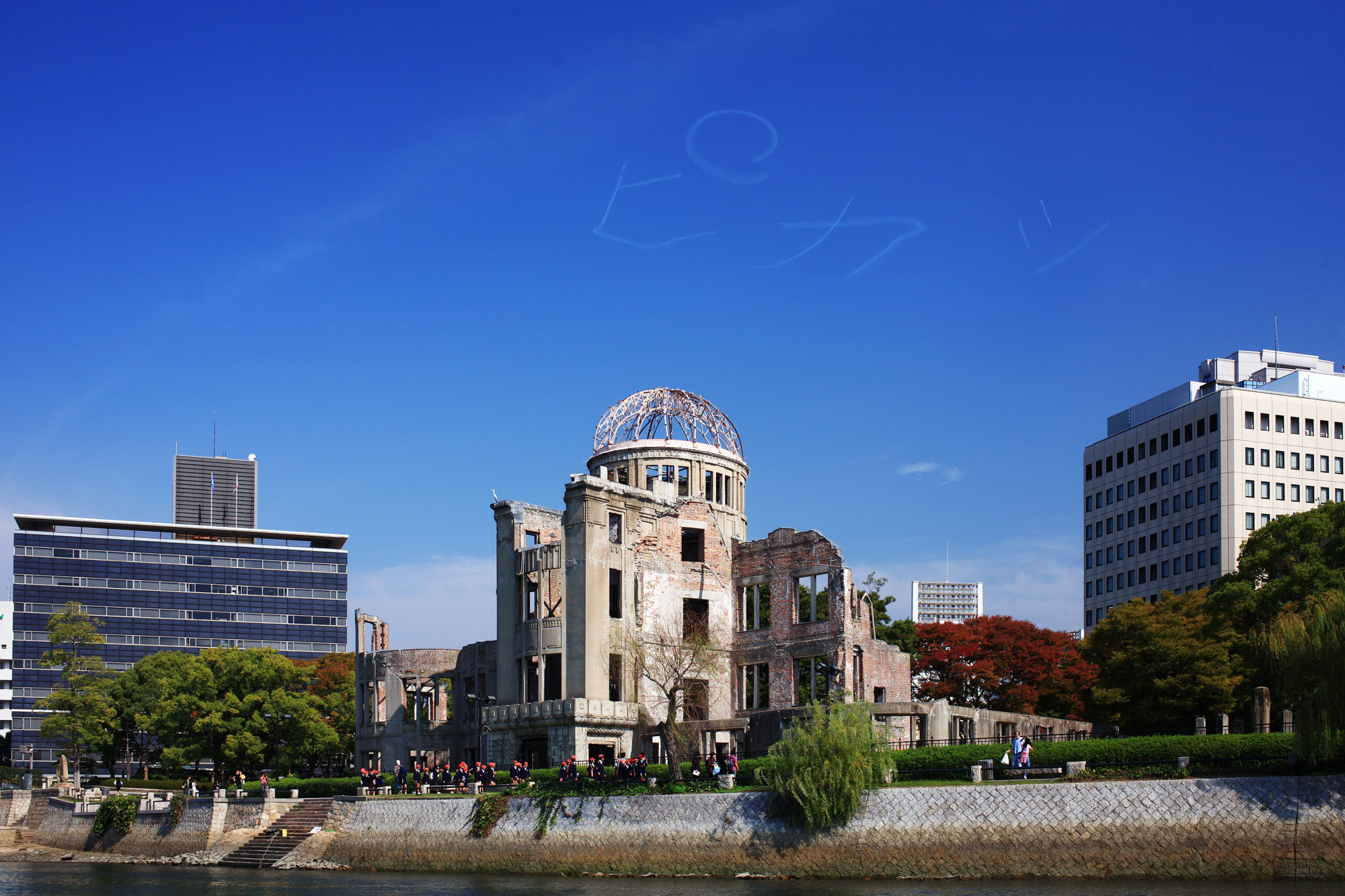
Documentation of CHIM-POM’s Making the Sky of Hiroshima "PIKA!" (2009), skywriting in Hiroshima. Photo by Cactus Nakao.
Making the Sky of Hiroshima “PIKA!” (2009)
On October 21, 2008, a plane spewed the skywriting of the word “pika”—an onomatopoeia for the flash of the atomic bomb in Japanese—above the Atomic Bomb Dome in Hiroshima, as part of Chim↑Pom’s project commissioned for a solo show at the Hiroshima City Museum of Contemporary Art. In memorial of the atomic bombings of Hiroshima during World War II, the group planned to document the skywriting act with their cameras, but the project led to instant public outrage, with the surviving victims expressing their distress of seeing the word in the sky. As a result, the group’s solo was canceled, and Ushiro, representing Chim↑Pom, apologized to the public at a press meeting. The group later worked with the survivors’ group in Hiroshima and published the book Why can’t we make the sky of Hiroshima “PIKA” (2009), which investigates the disputes around the work and examines the contrasting perspectives of Japan and the United States on the atomic bomb.
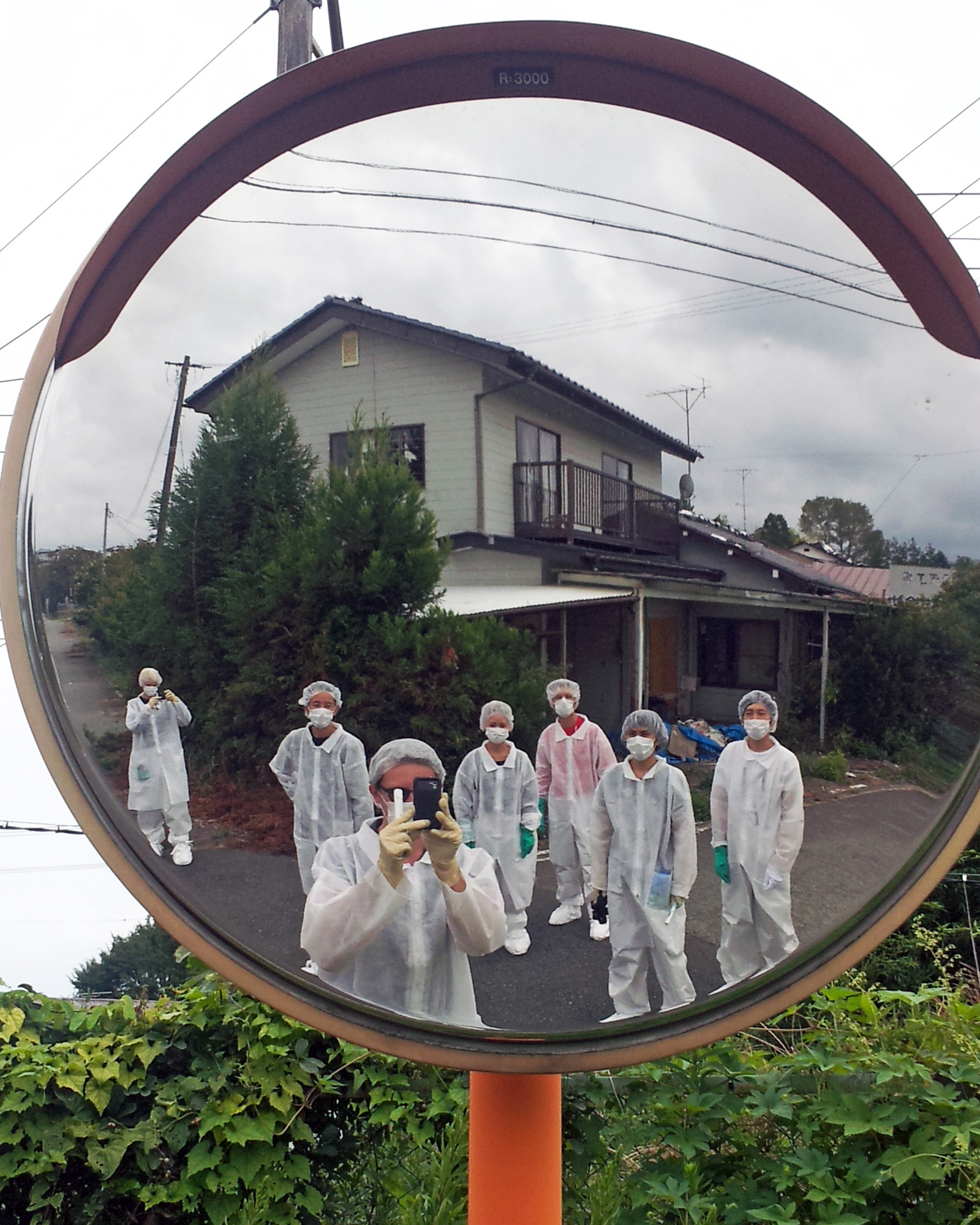
Photo of the curatorial team of "Don’t Follow the Wind" (2015) on a site visit in the Fukushima Exclusion Zone. Courtesy Don’t Follow the Wind Committee.
Don’t Follow the Wind (2011– )
Initiated by Chim↑Pom, “Don’t Follow the Wind” is an international site-specific exhibition that marked the group’s shift from video- and performance-focused works to larger, curatorial projects. In collaboration with 12 artists including Ai Weiwei, the exhibition remains unseen to the public as the works are spread across the Fukushima Exclusion Zone, a restricted area contaminated by radiation due to the Fukushima nuclear disaster in 2011. Even the project’s satellite exhibition in Tokyo’s Watari Museum of Contemporary Art, titled “Non-Visitor Center,” featured works that were only partially visible through a window. The inaccessibility of “Don’t Follow the Wind” reminds viewers of the invisible and long-lasting dangers of nuclear power.

CHIM-POM, Level 7 feat. Myth of Tomorrow, 2011, still from video: 4 min 32 sec. Copyright the artist.
Level 7 feat. Myth of Tomorrow (2011)
Inspired by their mentor Makoto Aida, Chim↑Pom strive to create art that engages with society in “real time,” sometimes through guerrilla art tactics. In 2011, they added their own panel to Taro Okamoto’s mural Myth of Tomorrow (1968–69) at the Shibuya station anonymously. While Okamoto depicts the atomic bombings of Hiroshima and Nagasaki through a fierce, spiky creature in the center, Chim↑Pom’s panel in the bottom right corner illustrates the failed reactors of the Fukushima nuclear plants, as an attempt to include the nuclear disaster caused by the Tōhoku earthquake in 2011 and extend Okamoto’s chronicle of Japan’s radiation history. Reactions to their project were mixed. Some claimed that it was vandalism, while others, including Akiomi Hirano, the director of the Taro Okamoto Memorial Museum, agreed that Okamoto would be amused if he was alive to see it.
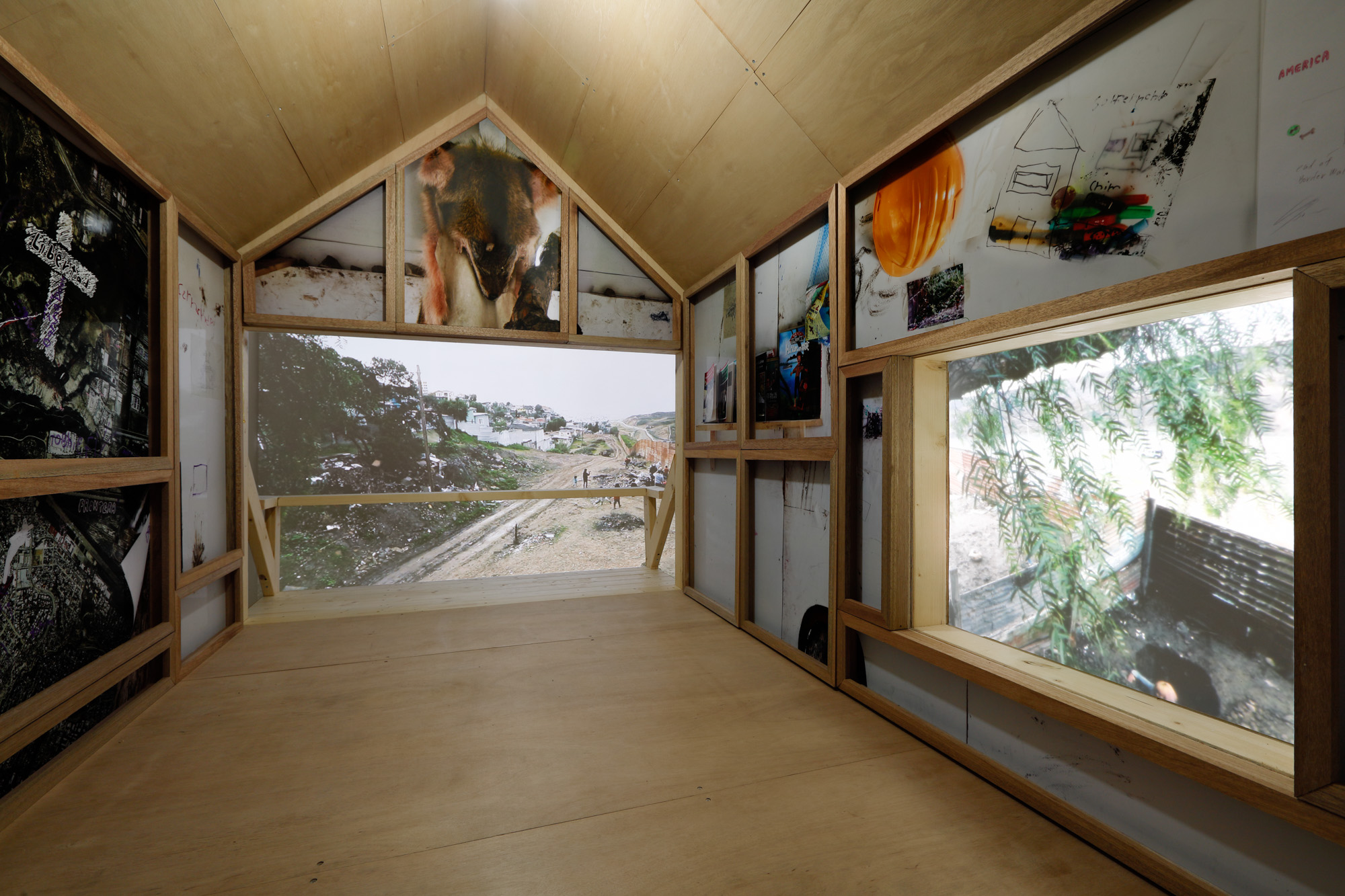
Installation view of CHIM-POM’s "the other side," at Mujin-to Production Tokyo, 2017. Courtesy the artist and Mujin-to Production.
the other side (2014– )
Departing from their personal experiences, Chim↑Pom turn generational experiences into thought-provoking works that critically reflect on social issues. Their project the other side derives from member Ellie’s denied entry to the US. Focusing on immigration issues on the US-Mexico border, one of the works, The Grounds (2017), saw Chim↑Pom leaving a cast of Ellie’s footprints in a tunnel they dug near the Mexican border, which essentially made her presence known under (but not on) American soil. In another work U.S.A. Visitor Center (2016), the group collaborated with a family living in Tijuana, a slum located by the border, to build a treehouse for those who are unable to enter the US. Through their interactions with the locals, the project ventures to transcend the geo-political boundaries and highlights the absurdity of immigration policies.
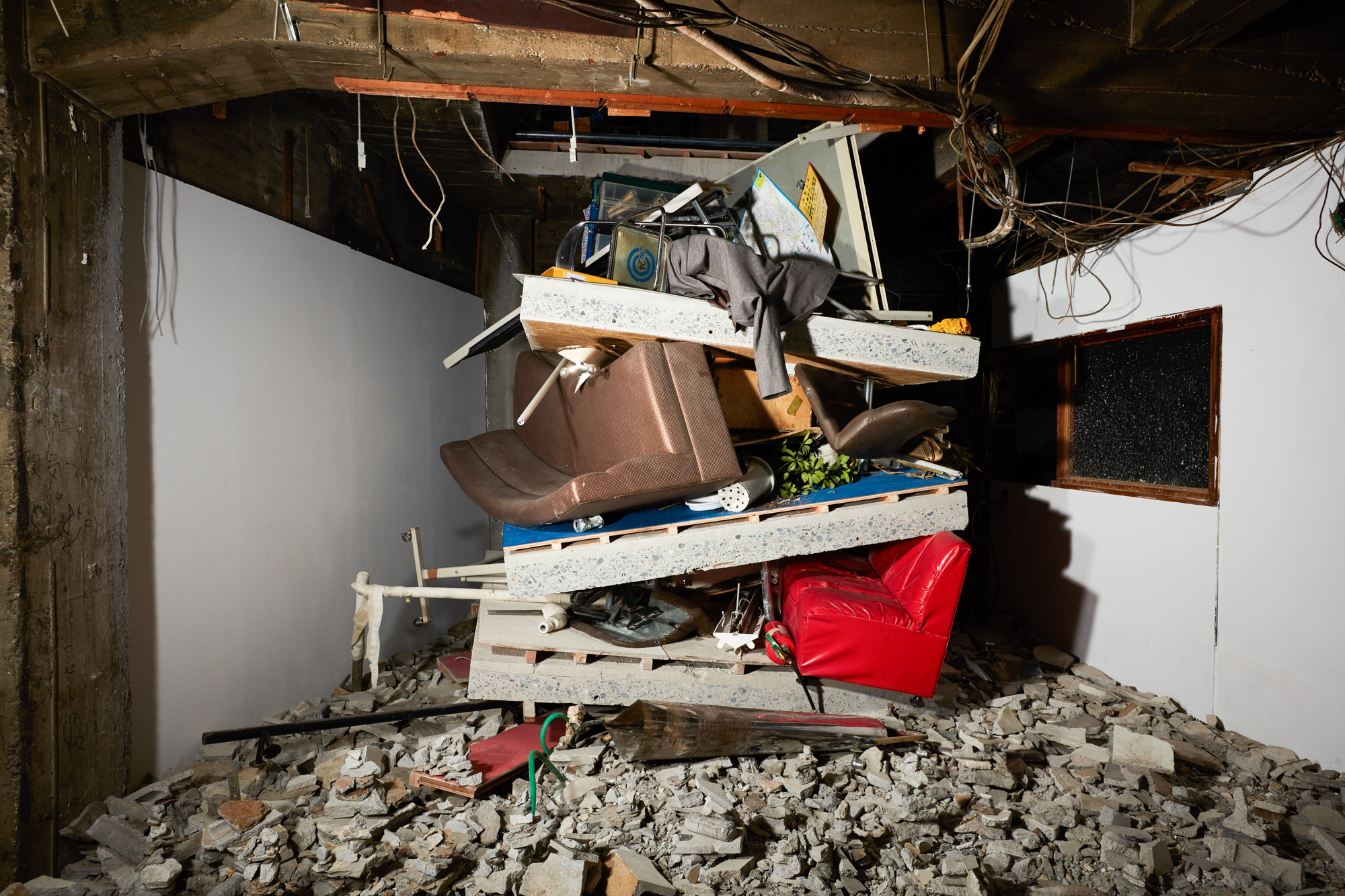
Installation view of CHIM-POM’s Build-Burger, 2016, three floors, residues of office supplies, air conditioner, furniture, carpet, etc., dimensions variable, at "So see you again tomorrow, too?" Kabukicho Promotion Association Building, Tokyo, 2016. Photo by Kenji Morita.
Build-Burger (2016)
Toeing the line between construction and destruction, the large-scale installation Build-Burger exhibited within the four-story Kabukicho Promotion Association Building, piled together furniture, domestic objects, office supplies, electrical appliances, and construction rubble that were originally parts of the building. Playing with the idea of “scrap and build,” a common description of Japan’s rapid urban development, Chim↑Pom made use of the debris to criticize Tokyo’s Olympic-based remodeling plans in the aftermath of the 2011 earthquakes. As the building later got demolished to make way for the new projects at the Tokyo 2020 Summer Olympics, the work was also destroyed, calling attention to issues of gentrification and the impermanence of human creation.
Chim↑Pom's survey exhibition “Happy Spring” is scheduled to run from February 18 to May 29 at the Mori Art Museum, Tokyo.








